#Articles

The first photo: Focal length: 20mm Exposure: F2.8 Shutter Speed: 13sec ISO: 6400 Camera: Sony α7 IV, Photoshop CC image processing
Exploring the starry skies captured with [Astro Focus Lock], a revolutionary new feature of the TAMRON Lens UtilityTM that solves the issues encountered with astrophotography.
The three principles of photography are 1. focus, 2. exposure, and 3. composition. If you nail 1 and 2, you can produce something that will be accepted as a photograph. But in the area of astrophotography – the photography of starry skies – nailing those two principles can be decidedly tricky, and many photographers have issues to solve them. In particular, achieving focus can vary depending on the performance and its focal length of a lens, and the shooting conditions. Due to my role as a YouTuber, many people have sought my advice regarding their focusing issues, but I have not yet found a way to solve all their problems perfectly. That was until TAMRON developed a feature that could be an answer to all those troubles. I’m referring to [Astro FC-L (Astro Focus Lock)], a new feature available through the TAMRON Lens Utility.
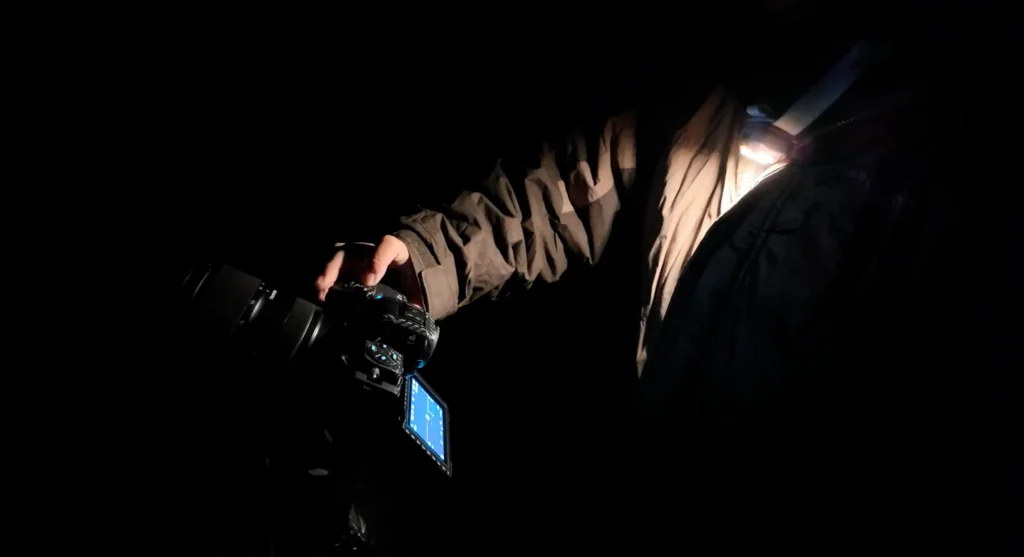
Preparation of astrophotography

TAMRON 20-40mm F2.8 (Model A062) Focal length: 20mm Exposure: F2.8 Shutter Speed: 13sec ISO: 10000 Camera: Sony α7 IV, Photoshop CC image processing
The method for achieving the proper focus in astrophotography is to enlarge a bright light source (a star or streetlight, etc.) and use manual focusing to make that light source appears as small as possible. That’s easy to describe on paper, but in practice it is quite difficult. Even in total darkness it can be quite hard to make things out looking at an LCD monitor. Photographers’ eyesight can also vary, and focus can also be affected by the air temperature and humidity. And no doubt many photographers have had the experience of initially getting the focus right, continuing to shoot for an extended period, only to notice after getting home and checking their photos that they had taken a lot of out-of-focus shots. And shooting astrophotography with standard or more telephoto lenses instead of wide-angle lenses is more difficult. Sometimes it is hard to focus on a light source when you touch the focus ring and cause camera shake, while at other times, there may be no bright stars to focus on within the area to be photographed, resulting in a lack of any reference on which to focus.
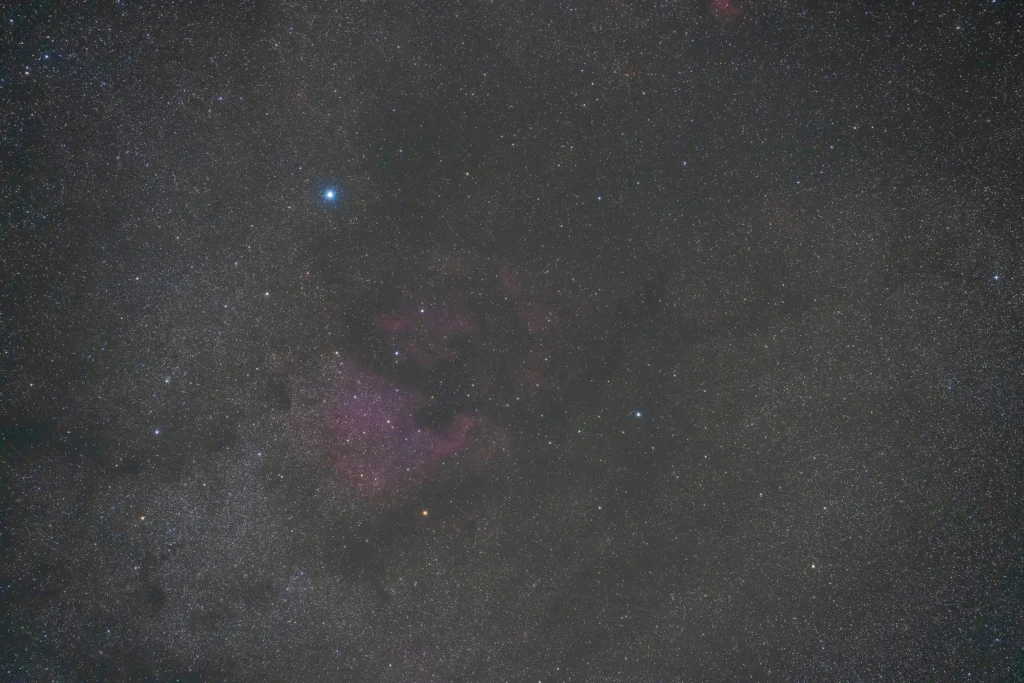
TAMRON 35-150mm F2-2.8 (Model A058) Focal length: 150mm Exposure: F4 Shutter Speed: 60sec ISO: 1600 Camera: Nikon Z 8, Photoshop CC image processing, using an equatorial mount
“The North America Nebula”
*While astrophotography usually involves the use of strong image processing, moderate processing has been employed in order to showcase the performance of the lens.
An effective means to solve these troubles is [Astro FC-L], the new feature offered through the TAMRON Lens Utility introduced in this article. Lenses have a designed infinity focus point. This is referred to as the “optical infinity focus”. The [Astro FC-L] feature can be used with TAMRON lenses equipped with a USB-C port. By connecting the lens to a computer or Android smartphone, an application can recognize the lens information and focus the lens to its optical infinity focus point with a single tap. The feature is easy to use, and with the mobile version, you connect the lens to an Android device via a USB cable and simply tap the [Astro FC-L]. This will instantly focus the lens to its optical infinity focus point. What you have to do after that is to set the exposure and click the shutter. The first time I used this feature, I was surprised at its convenient and simple operation.
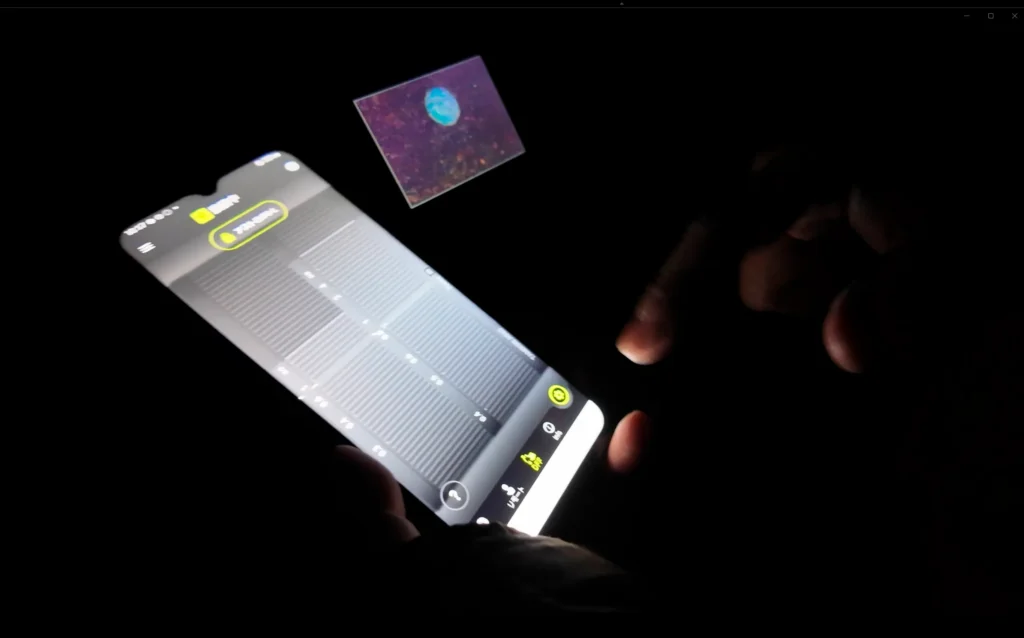
Before tapping of the [Astro FC-L]
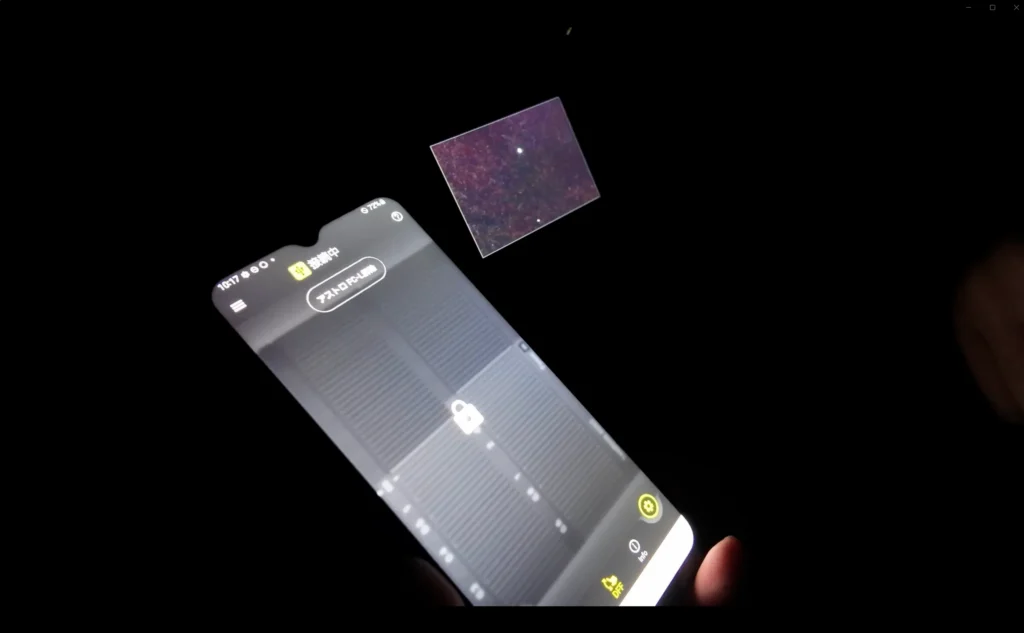
After tapping of the [Astro FC-L]
If your lens is equipped with a Focus Set Button, you can set it to activate the [Astro FC-L]. This means that even without the Android smartphone, you can direct your lens to focus to its optical infinity focus point.

Astrophotography using [Astro FC-L]
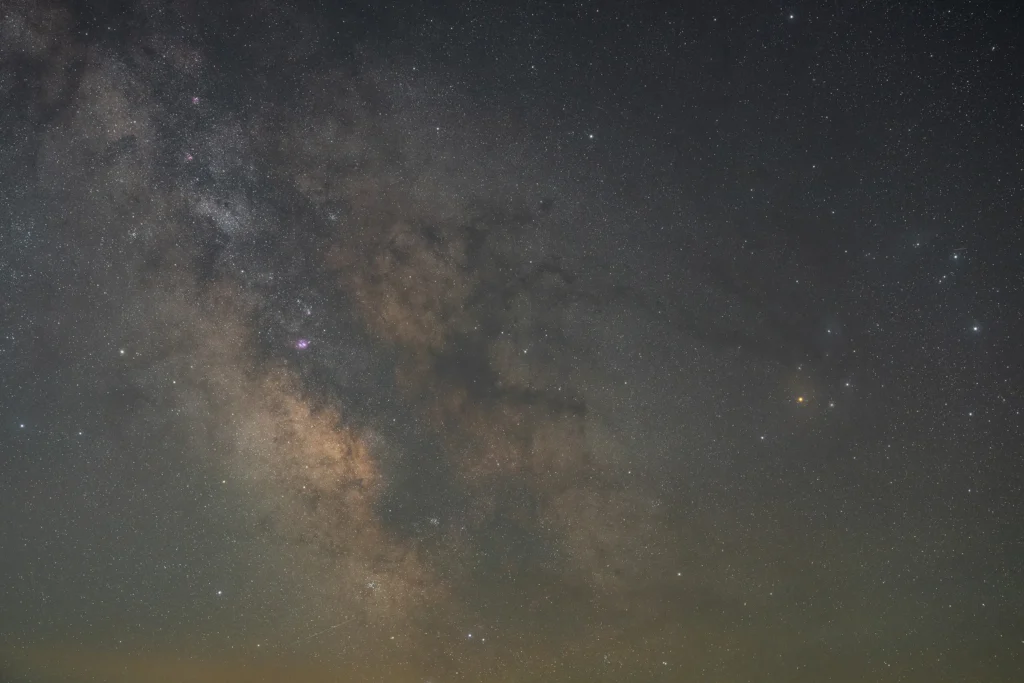
TAMRON 28-75mm F2.8 (Model A063) Focal length: 43mm Exposure: F4 Shutter Speed: 60sec ISO: 1600 Camera: Nikon Z 8, Photoshop CC image processing, using an equatorial mount
“Center of the Milky Way, near Bambi’s profile”
I describe optical infinity as the designed infinity focus point because the position of infinity can change depending on the shooting environment. Latest lenses employ vibration compensation and autofocus mechanisms, and some lens elements move to control those mechanisms. When the air temperature decreases or the humidity rapidly increases, those lens elements may shift depending on the lens element material or its optical design, which causes shift of the focus position. I have experienced when a lens did not focus to true optical infinity at an air temperature of 1 °C (33.8°F). With [Astro FC-L], fine adjustments can easily be made even in these situations, and when you disengage [Astro FC-L], the focus can be adjusted from the application. This is another very handy feature. As you can see in the image below, the focus ring on the left handles major adjustments, and the focus ring on the right handles fine adjustments. Pinching the fine adjustment part enlarges the image, enabling even more precise focusing. Being able to adjust the focus without having to touch the lens while shooting outdoors strikes me as quite revolutionary.
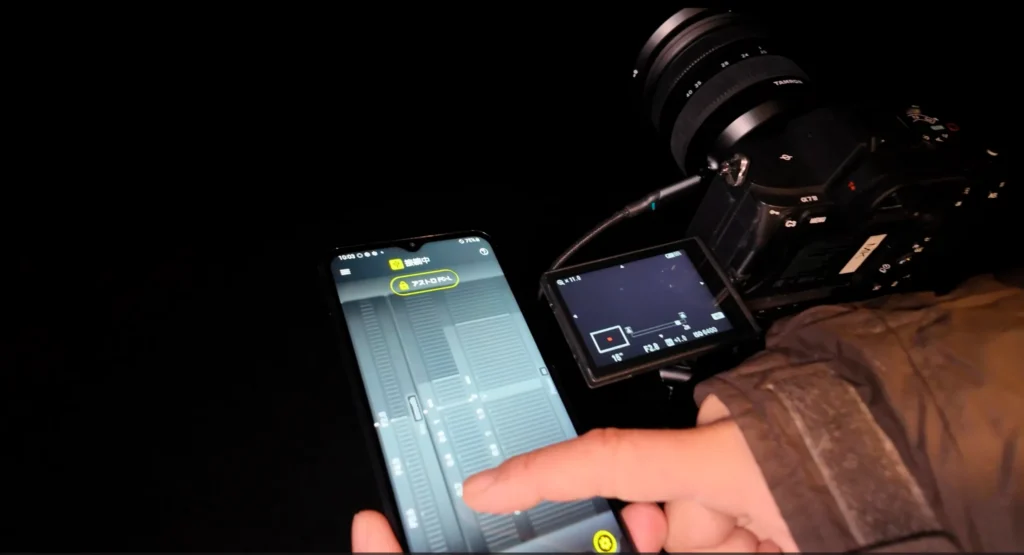
Enabling fine adjustments to focus
With astrophotography, we sometimes use soft filters to make the stars appear more glamorous by making them larger and more diffused. This is also a factor that is affected by the air temperature and humidity, but under conditions where the air temperature was around 6 °C (42.8°F), I was able to adjust the focus to optical infinity without any issues. However, as I mentioned earlier, the focal point can change depending on the air temperature and humidity. I recommend regularly checking that your image is properly in focus while shooting.

TAMRON 20-40mm F2.8 (Model A062) Focal length: 40mm Exposure: F2.8 Shutter Speed: 4sec ISO: 6400 Camera: Sony ZV-E1, Photoshop CC image processing, using a soft filter
The simple operation with a single tap to make the focus on the starry skies all the time. You can also adjust the focus without touching the focus ring on the lens while a lens heater is attached.
After trying out the new [Astro FC-L] in TAMRON Lens Utility

TAMRON 20-40mm F2.8 (Model A062) Focal length: 20mm Exposure: F2.8 Shutter Speed: 10sec ISO: 8000 Camera: Sony α7 IV, Photoshop CC image processing
Focus adjustment of astrophotography have been an issue to many photographers who admire starry skies. I believe [Astro FC-L] of TAMRON Lens Utility will help them solving the trouble. I encourage everyone to make use of TAMRON’s revolutionary new software feature to take on the challenge of shooting the stars.
Astrophotography time-lapse video using [Astro FC-L] featured in TAMRON Lens Utility

